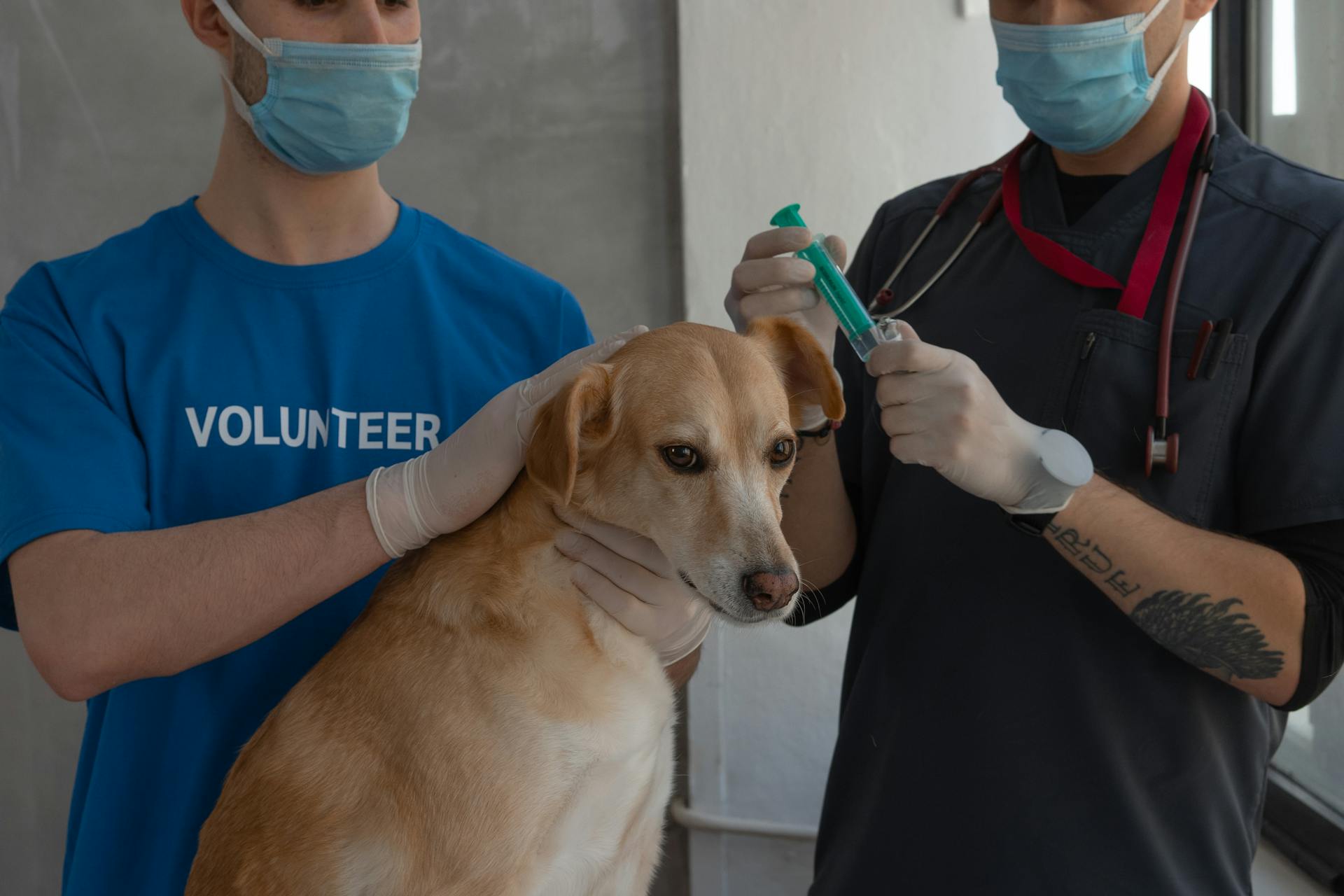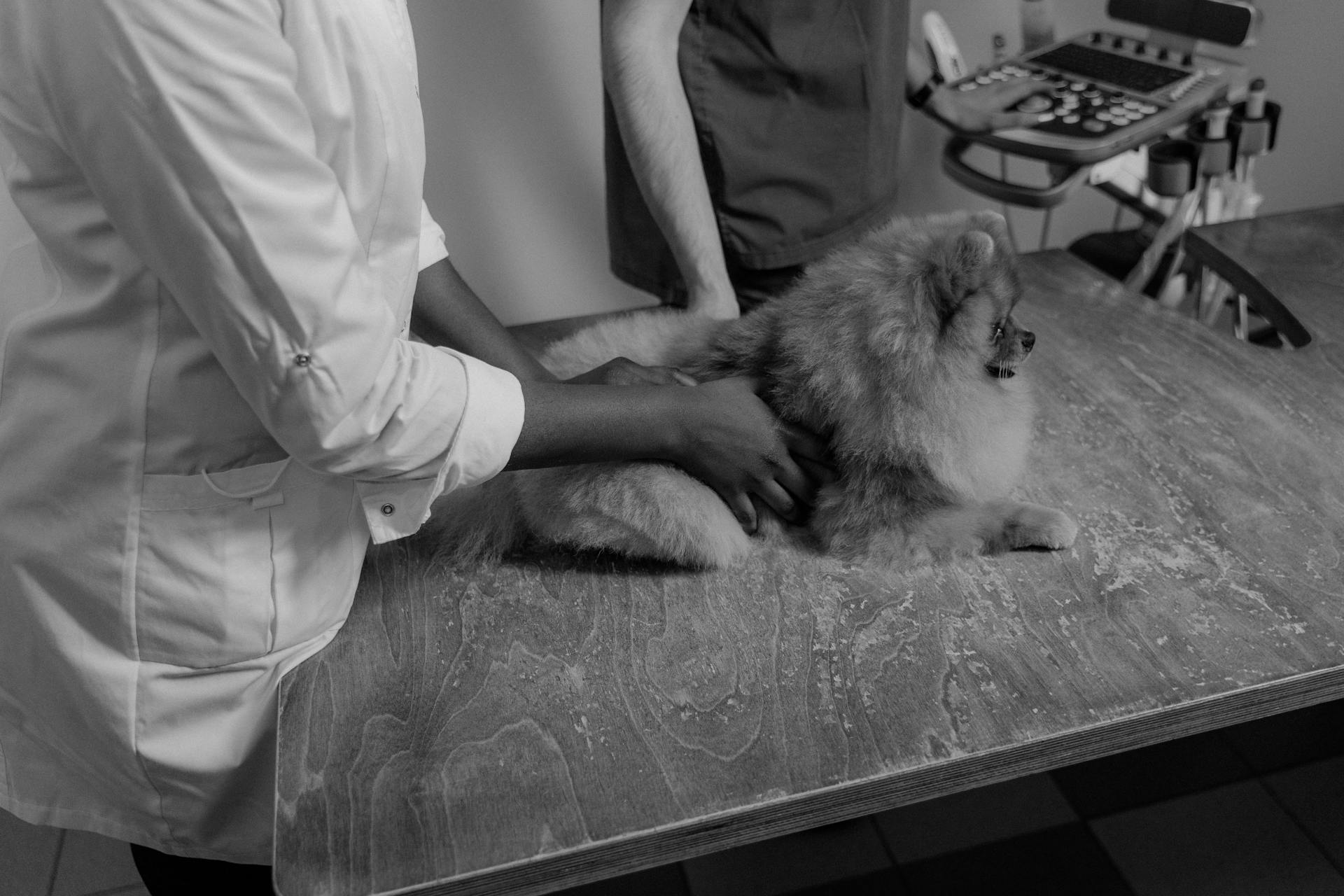
Male dogs do have a prostate, a small gland located just below the bladder that plays a crucial role in their health.
The prostate is a walnut-sized gland that surrounds the urethra and is responsible for producing a protein-rich fluid that makes up a significant portion of semen.
Just like humans, male dogs' prostates can become enlarged with age, a condition known as benign prostatic hyperplasia (BPH). This can cause discomfort, pain, and difficulties with urination.
As we'll explore further, understanding the prostate and its potential issues is essential for maintaining your dog's overall health and well-being.
Signalment & Risk Factors
Male dogs have a prostate, but did you know that prostatic disease is common in dogs but rare in cats? This is a key distinction to keep in mind when considering the health of our canine companions.
Prostatic disease is more common in intact dogs, which means those who haven't been neutered. This is true for conditions like Benign Prostatic Hyperplasia (BPH), Chronic Benign Prostatic Hypertrophy (CBPH), and Infectious Prostatitis (IP).
Intact dogs are more likely to develop these conditions due to hormonal influences. In contrast, neutered dogs are more prone to Prostatic Neoplasia (PN), which is a type of prostate cancer. This condition typically affects dogs over the age of 10.
Here's a quick summary of the risk factors for prostatic disease in dogs:
- Intact dogs are more likely to develop BPH, CBPH, and IP.
- Neutered dogs are more prone to PN, especially after the age of 10.
Understanding these risk factors can help us take proactive steps in maintaining our dogs' prostate health.
Symptoms and Diagnosis
Male dogs do have a prostate, and it's a vital part of their reproductive system. Prostate disease in dogs is more common than prostate cancer, but it's still a serious issue.
Symptoms of prostate disease in dogs can vary, but common signs include blood in urine or semen, straining or difficulty urinating, and frequent urination in small amounts. Your dog might also exhibit behavioral changes, such as barking at nothing or displaying aggression towards family members.
A veterinarian can diagnose prostate disease in dogs through various methods, including palpating the prostate by rectal exam, taking a urine sample, and running blood tests. They may also suggest X-rays, an ultrasound scan, or a biopsy to determine the underlying cause of the condition.
Here are some common symptoms of prostate disease in dogs:
- Blood in urine or semen
- Straining or difficulty urinating
- Frequent urination, often in small amounts
- Pain while urinating
- Constipation or difficulty passing stool
- Ribbon-like, thin stools
- Lethargy and weakness
- Pain or discomfort in the hindquarters or abdomen
- Stiff or abnormal gait
- Swelling in the abdominal area
- Fever (in cases of infection)
- Loss of appetite and weight loss
- Vomiting and diarrhea (less common)
Why Is My Dog Enlarged?
Your dog's enlarged prostate can be a real challenge to deal with, both for you and your furry friend. The prostate gland is a small reproductive gland that sits surrounding the urethra, just underneath the colon, and can become enlarged due to a variety of reasons.
There are three main causes of prostate enlargement in dogs: benign prostatic hyperplasia/BPH, prostatitis, and prostate cancer. I've seen firsthand how these conditions can affect a dog's quality of life, making it difficult for them to pee and poo.
Benign prostatic hyperplasia/BPH is the most common cause of prostate enlargement in older dogs, caused by long-term exposure to testosterone. Prostatitis is another common cause, often resulting from an infection and/or inflammation. Prostate cancer is a less common but still serious cause of an enlarged prostate in dogs.
Here are the three main causes of prostate enlargement in dogs:
- Benign prostatic hyperplasia/BPH (enlargement due to long-term exposure to testosterone)
- Prostatitis (enlargement due to an infection and/or inflammation)
- Prostate cancer (enlargement due to a tumour)
Problem Symptoms

Your dog's prostate disease can manifest in various ways, and it's essential to recognize these symptoms to ensure timely treatment.
Behavioral changes are often the first sign of canine prostate disease, such as barking at nothing, sleeping excessively, or displaying aggression towards family members.
Blood in urine or semen is a common symptom, which can be a sign of prostate disease or infection.
Straining or difficulty urinating is another common symptom, often accompanied by frequent urination, especially in small amounts.
Pain while urinating, constipation, or difficulty passing stool can also be indicative of prostate disease.
Here are some key symptoms to look out for:
Lethargy and weakness, pain or discomfort in the hindquarters or abdomen, and swelling in the abdominal area are also possible symptoms.
Loss of appetite and weight loss can be a sign of advanced prostate disease, while vomiting and diarrhea are less common symptoms.
Take a look at this: Male Dogs in Heat Symptoms
Diagnosis
Diagnosing prostate disease in dogs can be a bit of a process, but it's essential to determine the underlying cause of an enlarged prostate. Your vet may be able to determine if your dog has a prostatic infection or cancer through various diagnostic methods.

Prostate cancer is rare in dogs, but it's typically malignant and can be fatal. A digital rectal exam can help your vet check for abnormalities, which may lead to further investigations.
To decide on a treatment plan, your vet will need to find out why your dog's prostate is enlarged. They may suggest some of the following investigations:
- Palpating (physically checking) your dog's prostate by rectal exam
- A urine sample
- Blood tests
- X-rays
- An ultrasound scan
- A biopsy from your dog's prostate
- Referral for specialist tests such as MRI or CT scans
Benign prostatic hyperplasia (BPH) is a common condition in intact male dogs, where the prostate gland becomes enlarged due to androgen hormones. If your vet suspects BPH, they may recommend noninvasive methods to evaluate the condition in the early stages.
Preventing Problems
Preventing prostate problems in dogs is crucial to maintaining their overall health. Neutering, especially in young dogs, can significantly reduce the risk of developing prostate disease, including benign prostatic hyperplasia (BPH) and prostatitis.
Regular veterinary check-ups are essential to detect prostate issues early, allowing for prompt treatment and management. This is particularly important for older, unneutered male dogs at a higher risk of developing prostate problems.
Monitoring your dog's behavior and watching for signs of prostate issues, such as difficulty urinating, bloody urine, or discomfort during defecation, can help catch problems early.
Maintaining a healthy weight through proper diet and exercise can help reduce the risk of prostate disease, as obesity can exacerbate specific prostate issues.
Preventing infections, such as bacterial infections that can cause prostatitis, is also crucial. This can be done by maintaining a clean environment for your dog and ensuring they have access to clean water.
A high-quality diet that supports overall health and well-being can also contribute to a lower risk of prostate disease.
Here are some preventive measures you can take to reduce your dog's risk of developing prostate disease:
- Neutering: Neutering male dogs, especially young dogs, can significantly reduce the risk of developing prostate disease.
- Regular veterinary check-ups: Regular veterinarian visits can help detect prostate issues early.
- Maintaining a healthy weight: Ensuring your dog maintains a healthy weight through proper diet and exercise can help reduce the risk of prostate disease.
- Preventing infections: Maintaining a clean environment for your dog and ensuring they have access to clean water can help prevent infections.
- Good hygiene: Practicing good hygiene for your dog, including regular grooming and cleaning of their living area, can help minimize the risk of infections.
- High-quality diet: Feeding your dog a balanced and high-quality diet will support overall health and well-being, which can contribute to a lower risk of prostate disease.
Frequently Asked Questions
Do neutered dogs still have a prostate?
Neutered dogs still have a prostate, but it shrinks significantly in size. This reduction in prostate size can help prevent certain health issues, such as prostatitis and benign hyperplasia.
How do you check a dog's prostate?
To check a dog's prostate, gently sweep your finger from side to side along the ventral floor of the rectum. This allows you to feel the caudal aspect of the prostate gland, which should be palpable once your finger is fully inserted.
What happens if dogs prostate is removed?
If a dog's prostate is removed, they may need a week or more of hospital care to recover, and a follow-up appointment will be scheduled to reevaluate their condition.
Sources
- https://www.cliniciansbrief.com/article/prostatic-disease
- https://criticalcaredvm.com/prostate-cancer-dogs/
- https://www.parsemus.org/pethealth/enlarged-prostate-dogs/
- https://beyondpets.com/pet-health-plus/prostate-disease-in-dogs/
- https://www.pdsa.org.uk/pet-help-and-advice/pet-health-hub/conditions/enlarged-prostate-in-dogs
Featured Images: pexels.com


